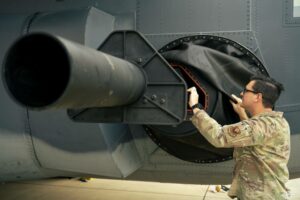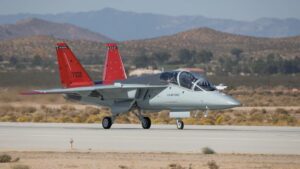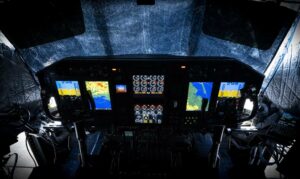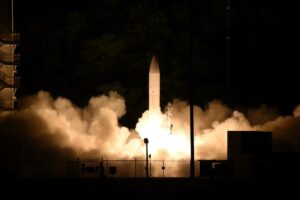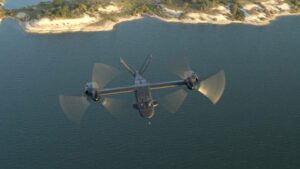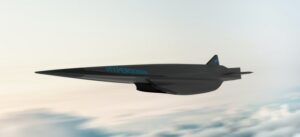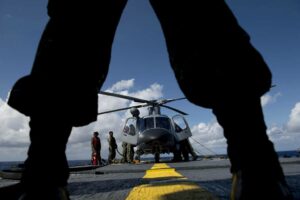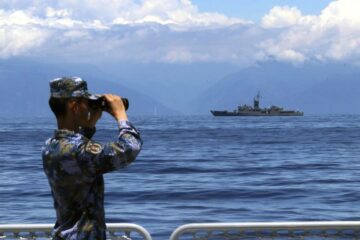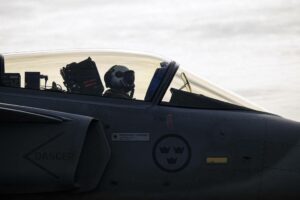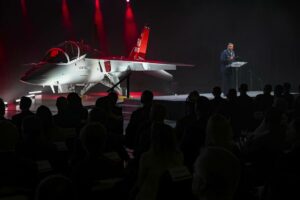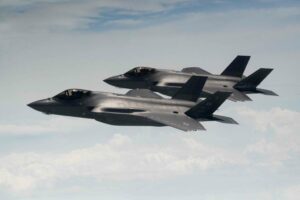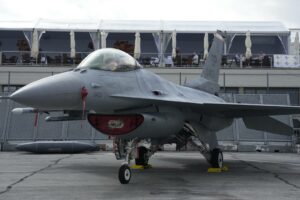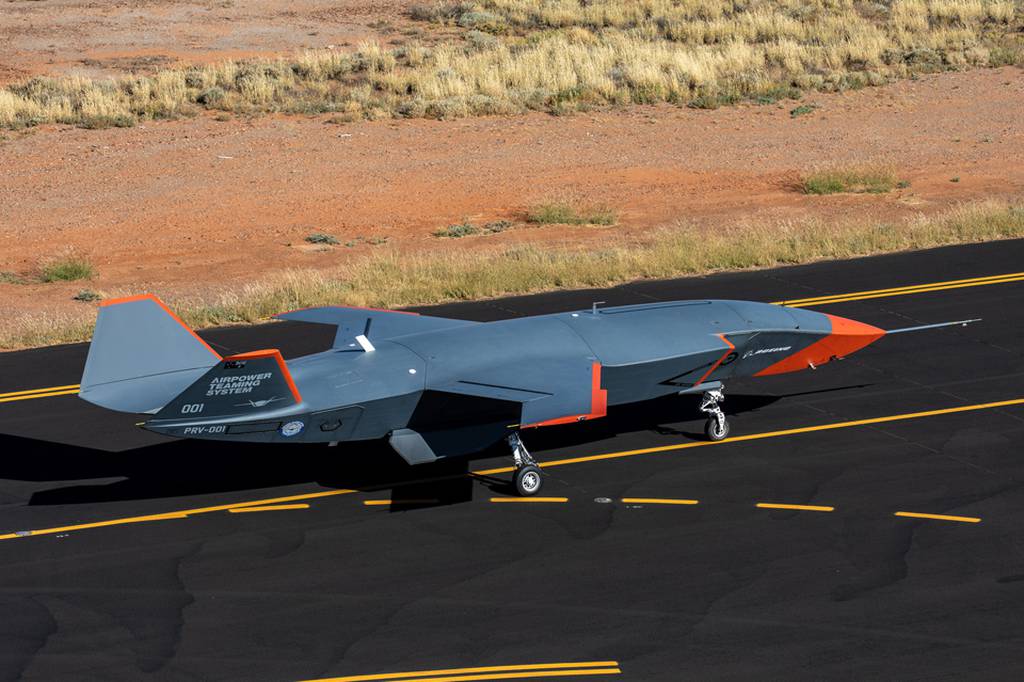
WASHINGTON — If the Air Force has to fight a major adversary such as China in years to come, a top general said, it must bring “mass” in its airpower — without breaking the bank.
But piloted fighters alone won’t be enough to maintain the United States’ prized air superiority, Lt. Gen. Richard Moore, deputy chief of staff for plans and programs, said in an interview with Defense News. Key aircraft in its fleet such as the F-15C are rapidly aging, and the service is on track to retire more than twice as many fighters as it buys over the next five years.
That’s why Moore said it’s vital for the Air Force to build and field a planned fleet of at least 1,000 drone wingmen to augment its piloted fighter fleet. And the service is working to pull together industry ideas for so-called collaborative combat aircraft and its own experiments to figure out how to make this a reality.
“The picture here is changing, and what’s changing the picture is CCAs,” Moore said.
Air Force Secretary Frank Kendall has made it clear creating CCAs is one of his top priorities, and the service is starting to sort out the details of how it will fold drone wingmen into its fleet and use them in a future conflict. In March, Kendall said he ordered the service’s planners to assume the Air Force will have 1,000 CCAs, though the final number could differ from that estimate.
Key lawmakers this spring aired their concerns to top Air Force leaders about the state of the Air Force’s fighter fleet and its plans for fighters in years to come.
In a March 29 hearing of the House Armed Services subcommittee on tactical air and land forces, Rep. Rob Wittman, R-Virginia, pointed to Air Force plans to divest 801 fighters by 2028 while bringing on less than half that with 345 F-35s and F-15EXs.
Moore said in that hearing most aircraft slated for retirement are F-15Cs and A-10 Warthogs, along with some older and less capable F-22s and F-16s.
The Air Force’s F-15C and D Eagles are rapidly aging, as their withdrawal from Kadena Air Base, Japan, in recent months has shown, and their numbers are dwindling. The service’s planned Next-Generation Air Dominance fighter platforms won’t arrive until the end of the decade, at best, and will be very pricey, with each system expected to cost hundreds of millions of dollars. And while the Air Force continues to bring on more F-35As, the service has cut its original plans to purchase 144 F-15EXs down to 104.
Wittman, the subcommittee’s chairman, warned continuing on such a “glide slope,” while key adversaries such as China continue to invest in fighter airpower, could turn America into a mere “regional power.”
Moore said that CCAs will be vital to delivering the kind of airpower that will be necessary to face off against a nation with a military comparable to the United States.
But trying to reach that level of airpower with crewed fighters alone would be prohibitively expensive, Moore said, prompting the Air Force’s turn to drone wingmen.
“We have to come up with a way to create affordable mass, and that’s where CCAs came in, and that’s why the numbers are so high,” Moore said, referring to plans envisioning a 1,000-drone fleet. “You can’t just talk about F-35s, and F-15Es, and F-15EXs and F-16s, and call that the enterprise. You have to add CCAs in.”
And the service’s proposed budget for 2024 requests money to make that planning a reality. The service asked for nearly $50 million to start a program called Project Venom that aims to refine autonomous software of the kind that could fly CCAs, and $69 million to launch an Experimental Operations Unit where officials would start developing the tactics and procedures to incorporate CCAs into a squadron.
Industry ideas for CCAs
Moore said that the experimental unit will take advantage of the Air Force’s novel acquisition approach for CCAs.
Usually, he explained, the Air Force first spells out a program’s requirements to industry, which will then come up with something that meets those requirements.
But this time, Moore said, Kendall deliberately told the Air Force not to start by spelling out requirements, and instead to ask industry what was possible. And the Experimental Operations Unit will take companies’ ideas and explore them further, Moore said, figuring out how to incorporate them into day-to-day squadron operations.
Moore said the Air Force expects to have concrete ideas from vendors on the attributes of CCAs within a few years, maybe sooner “if we get lucky.”
The service will then start experimenting with drone prototypes and determine what level of autonomy is possible.
“That will be fundamentally a part of the employment concept as well,” Moore said. “If they’re truly autonomous, if we can get there, then that opens up some additional possibilities. If they are somewhat autonomous, then that would lead you more to a ‘loyal wingman’ concept, or CCAs being part of a formation with manned fighters. We’ll just have to see how that plays out.”
Project Venom, in which autonomous software will be installed in six F-16s for experimentation, will help shape the course of those future experiments on industry aircraft, he said.
And there are many questions that still need to be sorted out once the Air Force has industry’s ideas in hand, Moore said. For example, will CCAs be an integral part of a squadron and deploy together, or will they be a separate unit that deploys on their own? Will they launch from the same bases as crewed fighters or from different locations?
“These are questions that don’t yet have answers, because we don’t yet know the attributes of the CCA that will come,” Moore said. “We’ll work all that out as those attributes begin to crystallize. And I think the answers will become relatively obvious based on the airplanes, but we don’t have them yet.”
Some drones could have multiple applications ranging from strike, intelligence collection or jamming, for example. “The one that we’re focusing on first is the ability for CCAs to augment the manned fighter force as shooters, so that’ll be first,” Moore said.
As for industry interest, some of the combat aviation segment’s largest companies have already expressed interest, including Boeing, Northrop Grumman, Lockheed Martin, Kratos and General Atomics, according to Moore.
“I think we see multiple pathways to what we’re trying to get to,” he said. “I don’t think there’s only one pathway, and we’re not dependent on a single company.”
Stephen Losey is the air warfare reporter for Defense News. He previously covered leadership and personnel issues at Air Force Times, and the Pentagon, special operations and air warfare at Military.com. He has traveled to the Middle East to cover U.S. Air Force operations.
- SEO Powered Content & PR Distribution. Get Amplified Today.
- PlatoAiStream. Web3 Data Intelligence. Knowledge Amplified. Access Here.
- Minting the Future w Adryenn Ashley. Access Here.
- Buy and Sell Shares in PRE-IPO Companies with PREIPO®. Access Here.
- Source: https://www.defensenews.com/air/2023/05/11/us-air-force-wants-drone-wingmen-to-bring-mass-airpower-on-a-budget/
- :has
- :is
- :not
- :where
- $UP
- 000
- 1
- 10
- 2024
- 2028
- 70
- a
- ability
- About
- According
- acquisition
- add
- Additional
- ADvantage
- affordable
- against
- Aging
- aims
- AIR
- Air Force
- aircraft
- Airplanes
- alex
- All
- alone
- along
- already
- america
- an
- and
- answers
- applications
- approach
- ARE
- armed
- AS
- At
- attributes
- autonomous
- aviation
- Bank
- base
- based
- BE
- because
- become
- begin
- being
- BEST
- Boeing
- Breaking
- bring
- Bringing
- budget
- build
- but
- Buys
- by
- california
- call
- called
- came
- CAN
- Can Get
- capable
- chairman
- changing
- chief
- China
- clear
- collaborative
- collection
- COM
- combat
- come
- Companies
- company
- comparable
- concept
- Concerns
- conflict
- continue
- continues
- continuing
- Cost
- could
- course
- cover
- covered
- create
- Creating
- Cut
- day-to-day
- decade
- Defense
- delivering
- dependent
- deploy
- deploys
- deputy
- details
- Determine
- developing
- differ
- different
- dollars
- Dominance
- Dont
- down
- drone
- Drones
- each
- East
- employment
- end
- enough
- Enterprise
- estimate
- example
- expected
- expects
- expensive
- experiments
- explained
- explore
- expressed
- Face
- few
- field
- fight
- fighters
- Figure
- final
- First
- FLEET
- focusing
- For
- Force
- Forces
- formation
- Frank Kendall
- from
- fundamentally
- further
- future
- Gen
- General
- get
- Half
- hand
- Have
- he
- hearing
- help
- here
- High
- his
- House
- How
- How To
- HTTPS
- Hundreds
- hundreds of millions
- i
- ideas
- if
- images
- in
- Including
- incorporate
- industry
- industry’s
- instead
- integral
- Intelligence
- interest
- Interview
- into
- Invest
- issues
- IT
- ITS
- jpg
- just
- Kadena
- Kendall
- Key
- Kind
- Know
- Land
- largest
- launch
- lawmakers
- lead
- leaders
- Leadership
- least
- less
- Level
- locations
- Lockheed Martin
- made
- maintain
- major
- make
- many
- March
- Martin
- Mass
- Meets
- mere
- Middle
- Middle East
- Military
- million
- millions
- money
- months
- more
- most
- multiple
- must
- nation
- nearly
- necessary
- Need
- news
- next
- next-generation
- novel
- number
- numbers
- obvious
- of
- off
- officials
- on
- once
- ONE
- only
- opens
- Operations
- or
- original
- out
- over
- own
- part
- pentagon
- Personnel
- picture
- piloted
- planned
- planning
- plans
- Platforms
- plato
- Plato Data Intelligence
- PlatoData
- plays
- possibilities
- possible
- power
- previous
- previously
- prized
- procedures
- Program
- Programs
- project
- proposed
- prototypes
- purchase
- Questions
- ranging
- rapidly
- reach
- Reality
- recent
- refine
- relatively
- reporter
- requests
- Requirements
- retirement
- Richard
- rob
- s
- Said
- same
- secretary
- see
- separate
- service
- Services
- Shape
- shown
- simulator
- single
- SIX
- Slope
- So
- Software
- some
- something
- somewhat
- special
- spring
- Staff
- start
- Starting
- State
- States
- Still
- strike
- subcommittee
- such
- system
- tactical
- tactics
- Take
- Talk
- Testing
- than
- that
- The
- The State
- their
- Them
- then
- There.
- they
- think
- this
- those
- though?
- time
- times
- to
- together
- top
- track
- traveled
- truly
- TURN
- Twice
- u.s.
- U.S. Air Force
- unit
- United
- United States
- until
- us
- use
- vendors
- Venom
- very
- vital
- wants
- was
- Way..
- we
- WELL
- What
- which
- while
- why
- will
- with
- within
- without
- Work
- working
- would
- years
- yet
- you
- zephyrnet

